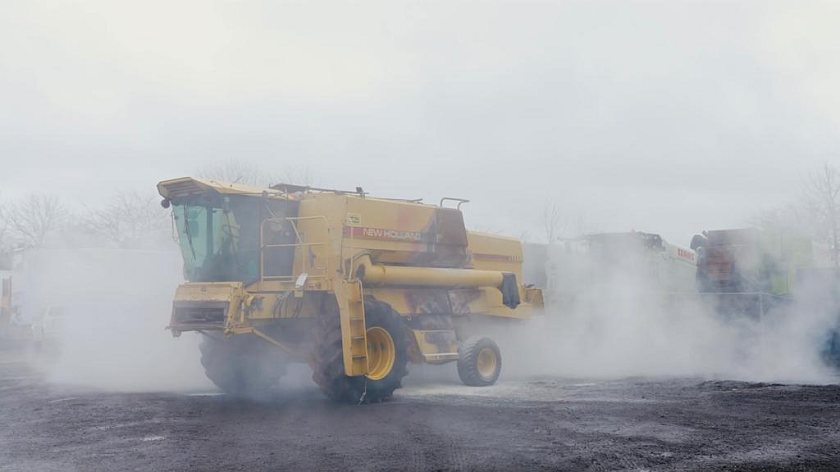
As harvest season begins in earnest, farmers and growers are being urged to stay vigilant and take proactive steps to reduce the risk of devastating combine fires.
Lincolnshire Fire and Rescue Service has issued a series of practical guidelines to help farmers prevent fires during harvest and respond effectively if the worst should happen.
Each year, combines catch fire during harvest, destroying machinery, putting buildings and crops at risk, and causing significant disruption to operations.
The cost of on-farm fires surged by 37% to over £110 million in 2023, according to the latest available data by NFU Mutual.
Matt King, head of response at Lincolnshire Fire and Rescue, has a clear message for farmers: be proactive and never complacent about fire risk on the farm.
“All farms are covered by fire safety legislation and must carry out a fire risk assessment. There is a lot of help and advice online and most fire services will have template assessment forms on their website that can be used by farmers,” he said.
Mr King also stressed the importance of having an emergency plan and ensuring that all staff are trained in what to do should a fire break out.
“If you need to call the fire service, ensure your directions are clear to where any fire is. The What3Words app is used by most fire services and can make a real difference in getting fire engines to the right place quickly.”
“Having information to hand in a folder with farm plans, details of dangerous substances such as chemicals and fertiliser and how to access water supplies is vital.”
Preventative maintenance is a critical step in reducing the risk of fire. Machinery should be kept in line with manufacturers’ service schedules, and farmers are advised to install fire suppression systems with P-mark certification.
Regular cleaning is also essential—particularly the removal of dust and chaff around hot spots. This should be done using air compressors (30 psi / 2.21 bar is effective), and always while wearing appropriate eye and respiratory protection. Engines must be switched off before clearing any blockages.
Close monitoring of machinery is important throughout the working day. Any signs of hot-running engines, overheating bearings or smoke should be investigated immediately.
Rural businesses are encouraged to have a clear fire plan in place, including procedures to stay in contact with lone workers and others on-site.
Mobile phones should be kept fully charged and within reach at all times. Combine drivers must also be aware of overhead power lines and vehicle heights to prevent accidental contact.`
In an emergency, the What3Words app is again recommended to assist emergency services in locating incidents quickly and accurately.
Each combine should be equipped with a regularly serviced fire extinguisher. However, Mr King warns that if a fire is not extinguished within 20 to 30 seconds, it is time to step back and allow the fire service to take over.
Farmers are also advised to keep a water bowser, tractor and plough ready to create fire breaks if needed. Water supplies and hydrants must be accessible, and any obstacles cleared in advance.
To reduce the risk of arson, farmers should avoid storing bales near public roads and ensure that fertilisers and pesticides are stored securely. If a fire involves hazardous substances, it is essential to inform the fire service due to the additional dangers involved.
Harvest activity should take prevailing weather into account. Mr King advises checking the wind direction and, where possible, harvesting in the direction of the already cut crop.
Finally, he reminds farmers to prioritise staff wellbeing. “Drink water, keep hydrated, take regular breaks, and monitor for fatigue during hot weather.”
